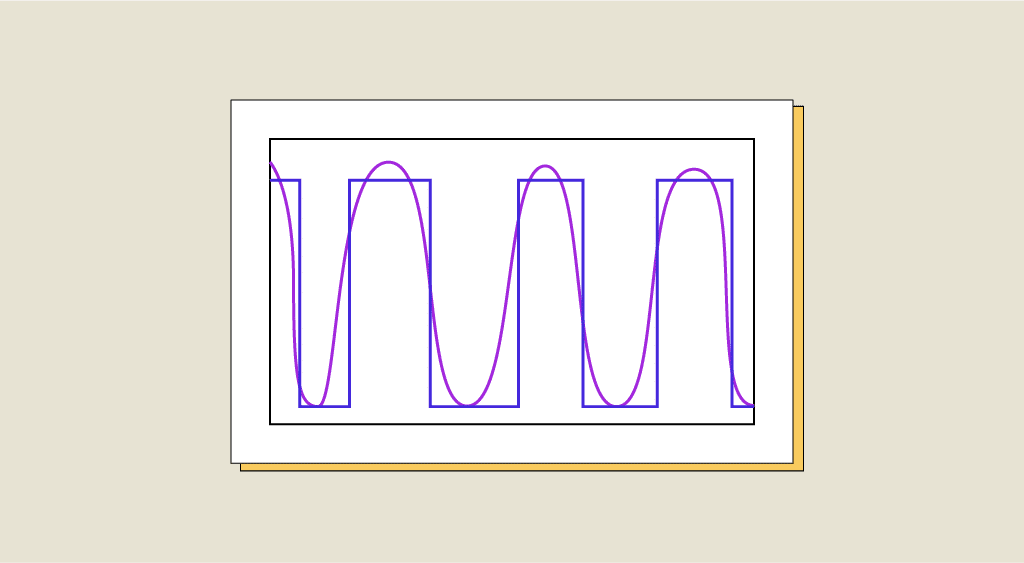In this article, we take a look at two key mathematical concepts: sequences and series. You need some basic mathematical knowledge to understand them fully.
Sequences are widely used in mathematics, and can be used to define sequences of mathematical objects such as polynomials, numbers, sets, functions, etc. Here, we’re only interested in numerical sequences, which are sequences of real numbers, and we’ll show the link between them and numerical series.
A sequence is made up of several terms, and each term has a rank. For example, the sequence 1, 2, 3, 4, 5 is made up of 5 terms (1,2,3,4,5) and their respective ranks are 0,1,2,3,4 if we consider 0 to be the first rank of the sequence. Sequences are also used in data science, particularly when working with time series.
How do you define a real sequence?
A real sequence can be defined as an application n \longrightarrow u_n from the set of integers to the set of real numbers and is often noted as (u_n)_{n \in \mathbb{N}} . A sequence can even be likened to a function that takes only integer values as arguments.
For example, f(n) = n, given an integer, is a real sequence.
There are several types of sequences:
-
- so-called explicit sequences which are defined by a formula as in the example above, for example: u_n = cos(n) or u_n = \frac{n-1}{n^2+3}
- so-called recurring sequences whose term depends on one or more terms preceding it, for example: u_{n+1} = sin(u_n) or u_{n+2} = 2u_{n+1} – u_n
What are the properties of a sequence?
A sequence is constant if all its terms are equal: for any n ∈ N, un = u0.
A sequence is stationary if, from a certain rank n_0, all its terms are equal: \exists n_0 \in \mathbb{N}, (n \geq n_0 \Rightarrow u_n=u_{n0}).
A sequence is periodic if there exists a positive integer N such that \forall n \in \mathbb{N}, u_{n+N} = u_n.
A sequence is increasing (respectively decreasing) if and only if n \in \mathb{N}, u_n \leq u_{n+1} ( respectively u_{n+1} \leq u_n).
Sequences and Series - Understanding suites
A numerical sequence can be defined as a partial sum of the terms of a numerical sequence. If we consider the sequence (u_n)_{n \in \mathbb{N}}, we can associate with it the series S(u)_n defined as S(u)_n = u_0+u_1+…+ u_n = \sum_{k=0}^{n}u_k
The term n of the series associated with the sequence can therefore be seen as the sum of the first n+1 terms of the sequence.
For example, if we take the sequence (u_n) = n, the series associated with this sequence is S(u)_N = \sum_{k=0}^{N}k = \frac{N(N+1)}{2}.
What are the links between sequences and series?
We’re always building a series from a sequence, and remember that a series is the partial sum of the first terms of the sequence. We can therefore easily say that the behavior of the series S(u_N) is intimately linked to that of the sequence (u_n).
Inversely, to study a sequence we can easily resort to a series. For example, if we want to study the monotonicity of a sequence (u_n) (check for growth or decay), we can consider an auxiliary sequence (v_n) defined by : v_0 = 0 and v_n = u_n – u_{n-1}. We then obtain u_n = \sum_{k=0}^{n} v_k. (u_n) is therefore the partial sum of order n of the series of term (v_n).
Sequences and Series - Conclusion
You now know what numerical sequences and series are, and how these two mathematical concepts are related. You also know some of the properties of these different mathematical objects. We can, of course, extend these notions to other types of object, such as polynomials, functions, sets, etc.
If you’re interested in series and sequences and want to learn more about time series, don’t hesitate to join one of our Data Science training courses.










